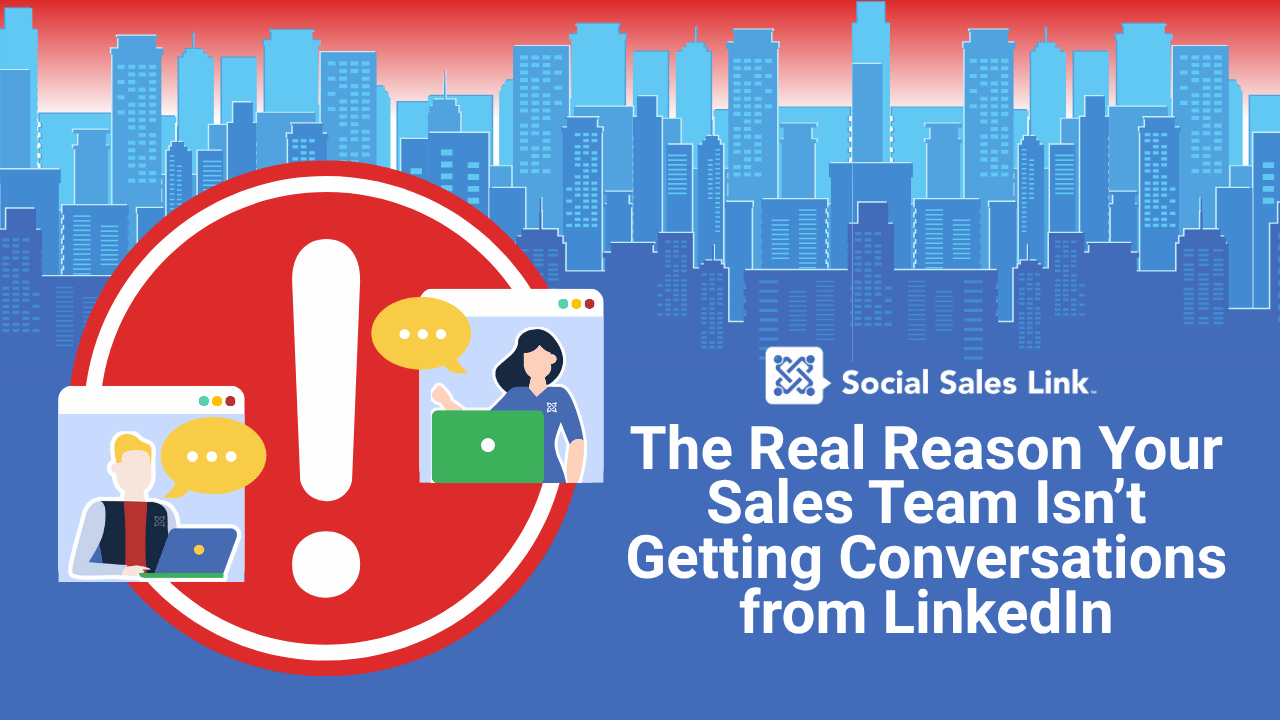
Your sales team is posting content, sending connection requests, even liking industry news, but conversations aren’t happening. And without conversations, there are no opportunities, no discovery calls, and no revenue.
The problem isn’t LinkedIn. The problem is how your team is showing up on LinkedIn. Most sellers are told to “be active” on the platform, but they’re rarely given a clear strategy. So they default to “random acts of social selling”, sporadic posts, surface-level comments, inconsistent outreach, and no follow-up process. The result? A lot of activity, but very few conversations.
Behavior Gap #1: Random Acts of Posting
Your reps are posting, but their posts aren’t leading anywhere. They might share a blog, repost a company update, or offer a general insight. But without direction or a call to conversation, content turns into noise. If a post doesn’t address the problems your buyers care about or offer a next step, it won’t generate anything meaningful.
The Fix: Teach your team to write posts with a “conversation hook.”
Every post should:
-Teach something new
-Shift a familiar belief
-Spark curiosity or engagement
Example:
Instead of “3 tips for better messaging,” try: “Your prospects aren’t ghosting you because of timing. They’re ghosting because your message isn’t about them.”
Behavior Gap #2: No Engagement Strategy
Posting without engaging is like showing up to a networking event and talking only about yourself.
Most reps don’t realize their comments carry more weight than their posts. Thoughtful comments put your name in someone else’s feed and help you show up as a peer, not a pitch. But most sellers default to “Nice post” or say nothing at all.
The Fix: Use the 10:1 rule, leave 10 valuable comments for every one post.
Effective comments:
-Acknowledge the insight
-Add your perspective
-Invite a reply
Behavior Gap #3: Connect and Ignore
Connection requests are sent. Some are accepted. Then… silence. This “connect and forget” behavior misses the moment when interest is highest. If someone accepts your request, you’ve earned attention,but if you don’t follow up with relevance, you lose it. And when messages do go out, they’re often generic, rushed, or way too soon with the pitch.
The Fix: Tailor your welcome message to the person, not the pipeline.
Start with curiosity, relevance, or gratitude. Before you message, take 30 seconds to scan their profile, recent content, or job changes. Then send a brief note that reflects that you see them, not just their title.
Example:
“Hi [Name], thanks for connecting. I saw you’re focused on [topic or initiative],that really stood out to me. If you’re open, I’d love to learn more about your approach and share a few ideas that have helped others in your space.”
Behavior Gap #4: Not Searching Client Connections for Referrals
You’ve earned your client’s trust. They’re happy. You’re already connected on LinkedIn. But your team isn’t looking at who they’re connected to, and they’re not asking for warm introductions.
The Fix: Build a referral habit around client success. Here’s how:
-Search your client’s connections using Sales Navigator or LinkedIn filters
-Identify 3 to 5 people they know who fit your ideal prospect profile
-Ask for permission to run through that list
Try this message:
“I noticed you are connected to a few people on LinkedIn that I will be reaching out to in the next few days. Before I do, I was wondering if you had 10 minutes where I can run these names by you and get your thoughts?”
Behavior Gap #5: Not Taking Inventory of Your Own Network
Your reps are likely connected to hundreds (maybe thousands) of people they’ve never spoken to. These are 1st-degree connections who already accepted the request but have never had a conversation. And they’re forgotten. Which means pipeline is sitting idle.
The Fix: Take inventory and organize your connections.
Use LinkedIn’s search tools:
-Click the search bar and press Enter
-Filter to People
-Click All Filters
-Select 1st-degree connections
-Add filters for location, industry, title, or company size
-Use Boolean logic in the title field, like: (marketing OR revenue) AND (“vice president” OR director)
From there, segment your network into:
-Clients
-Prospects
-Referral Partners
Behavior Gap #6: No Outreach Framework Integration
Your reps are doing LinkedIn activity, but they’re not integrating it into your workflow. LinkedIn lives outside the cadence. No tracking. No visibility. No accountability.
If your team is using tools like Gong, SalesLoft, or Outreach, but LinkedIn isn’t part of the rhythm, social selling becomes optional. And optional becomes invisible.
The Fix: Treat LinkedIn activity like any other sales motion. That means:
-Adding LinkedIn tasks to daily sequences
-Tracking engagement and connection attempts
-Logging profile views, DMs, and content interactions
-Building comments and outreach into your CRM fields
It’s Not a LinkedIn Problem. It’s a Behavior Problem.
Your sales team doesn’t need better tools. They need better habits. They don’t need to become content creators. They need to become conversation starters. And they need a system that makes it easier to do the right things, consistently.
These small shifts, more engagement, smarter outreach, better follow-up, change everything. More conversations. More trust. More qualified opportunities. If your team isn’t getting results from LinkedIn, it’s not the algorithm. It’s the absence of a strategy that fits how buyers want to be approached today. Let’s fix that.


